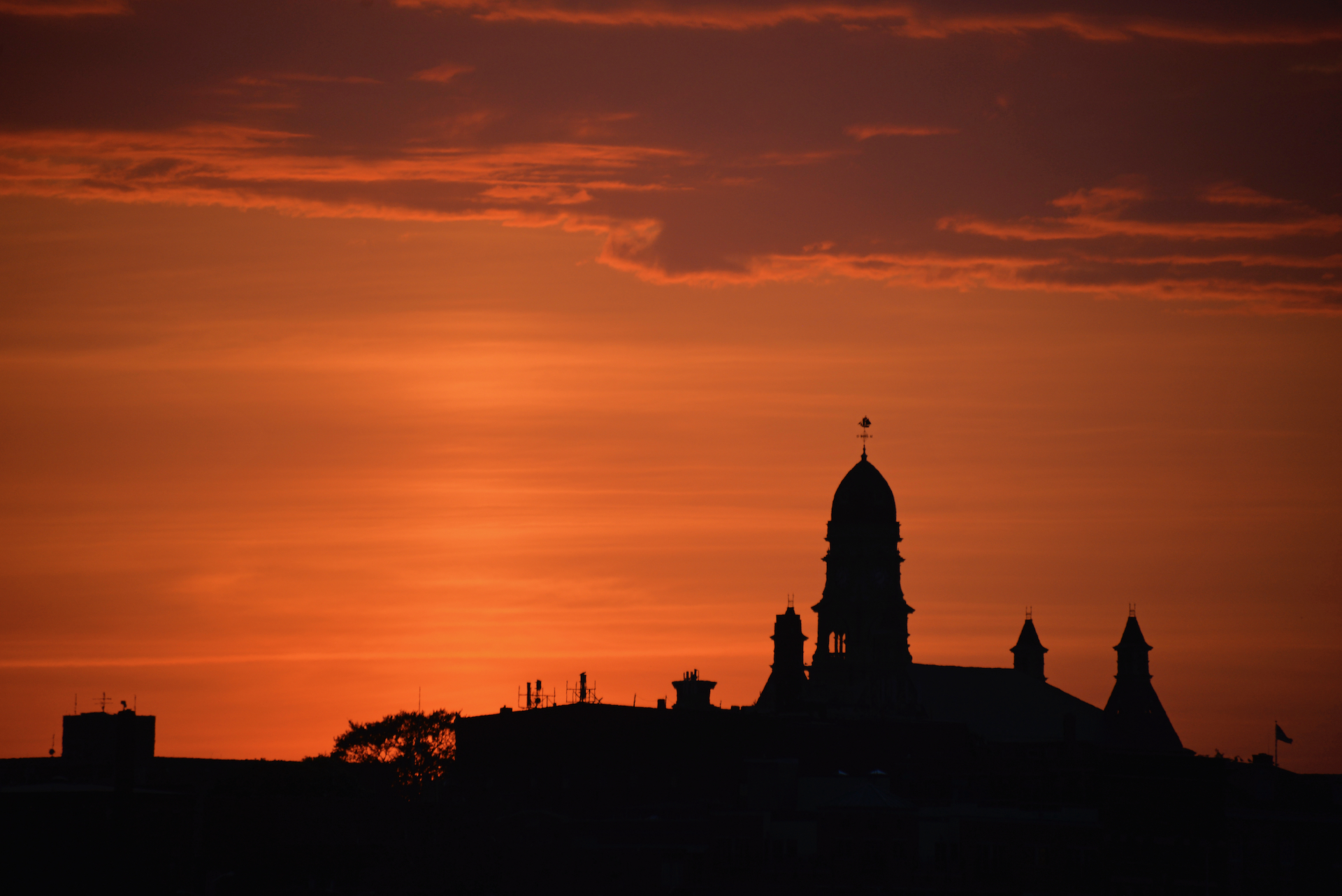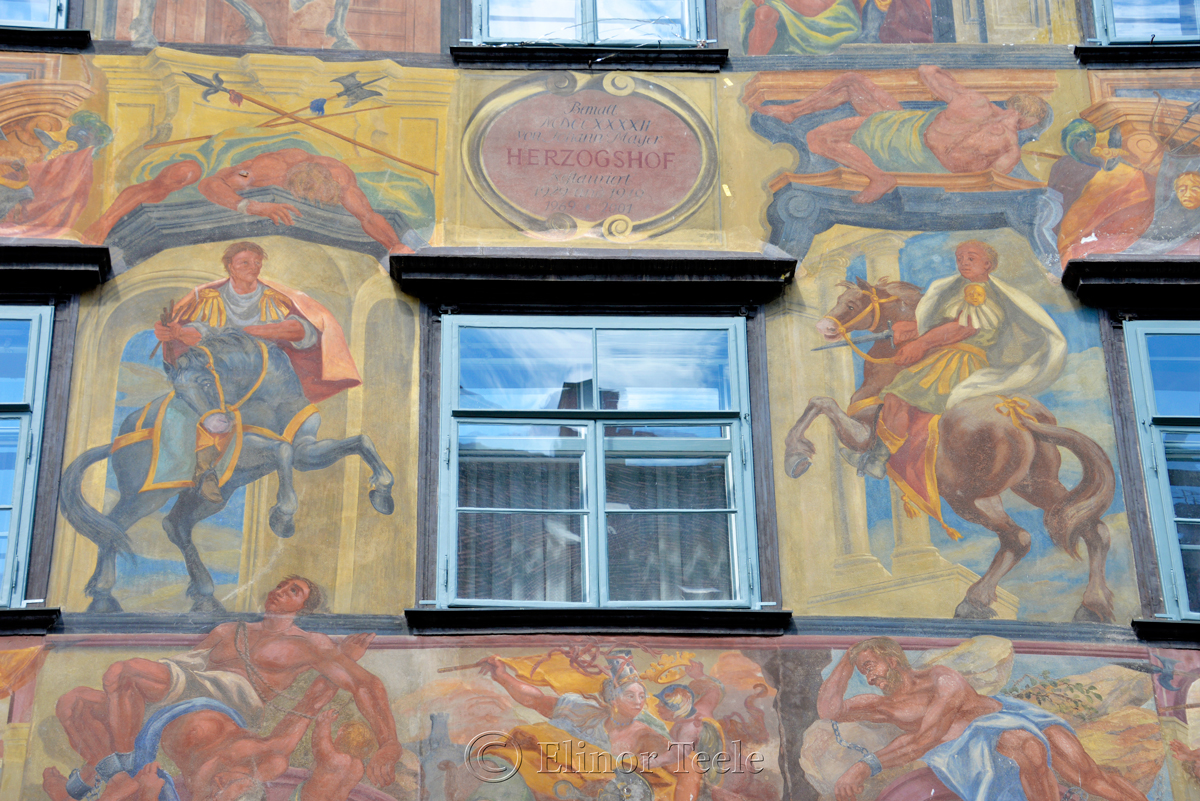Although they may appear like the products of a modern tanning bed, the Greco-Roman gods and goddesses on #7 Herrengasse are the work of the Baroque painter, Johann Mayer.
Until A.D. 1450, when Graz Castle was built, Herzoghof (“Duke’s Court”) was the seat of the Dukes of Styria. Later in its life, Herzoghof was used by the Habsburgs to conduct official business.
Art Bonus: Mayer was following in the “brushmarks” of Giovanni Pietro de Pomis, the court painter of Emperor Ferdinand II and architect of Ferdinand’s grandiose Mausoleum. De Pomis first painted the building in A.D. 1600.
Fans of outdoor art can also look for the Murinsel, the “House of the Black and White Stripes” on Wielandgasse, the Lichtswert sculpture, old floral frescoes on the wall of Graz Castle (above the Jewish grave marker), the Landplagenbild on the side of the Dom, and – of course – graffiti.

